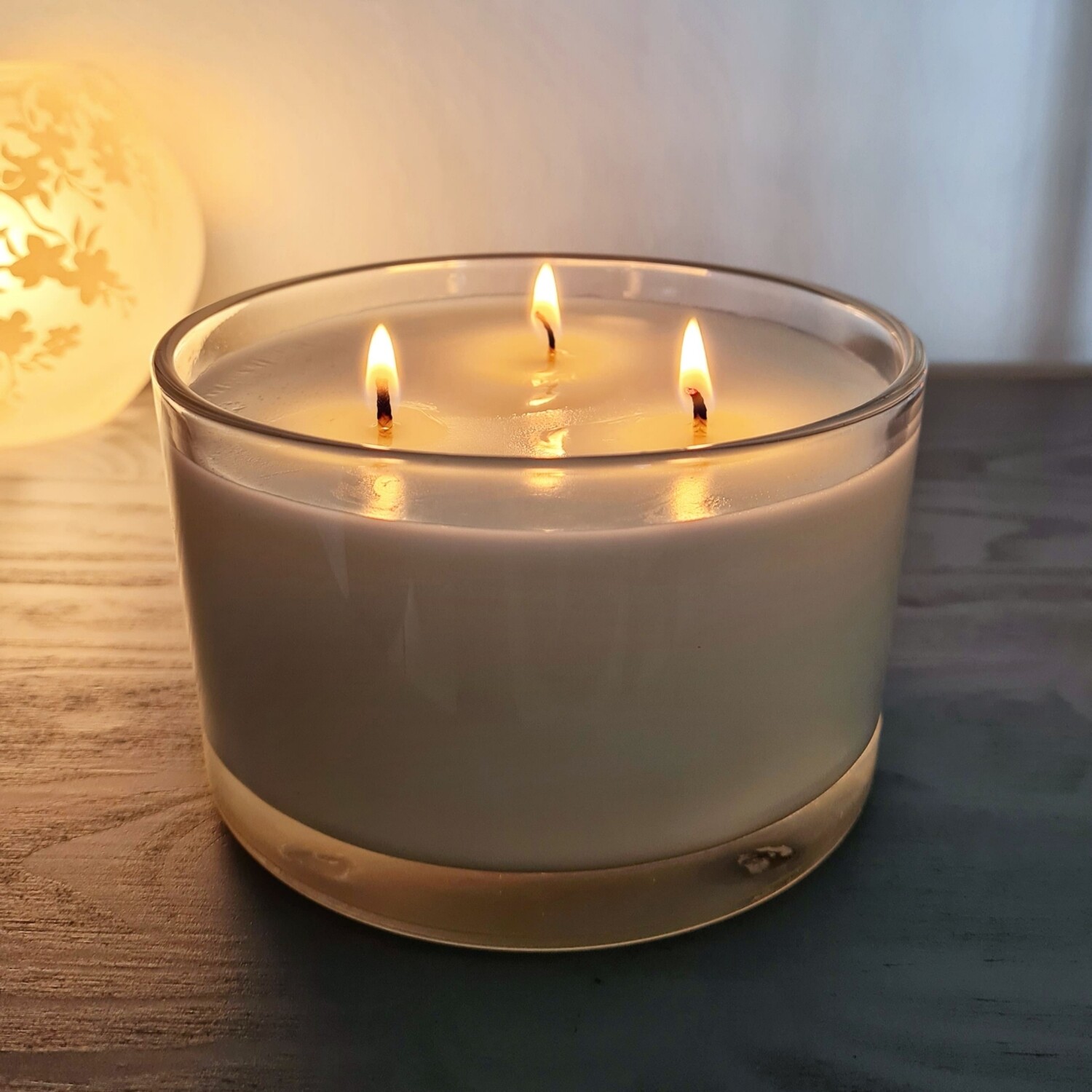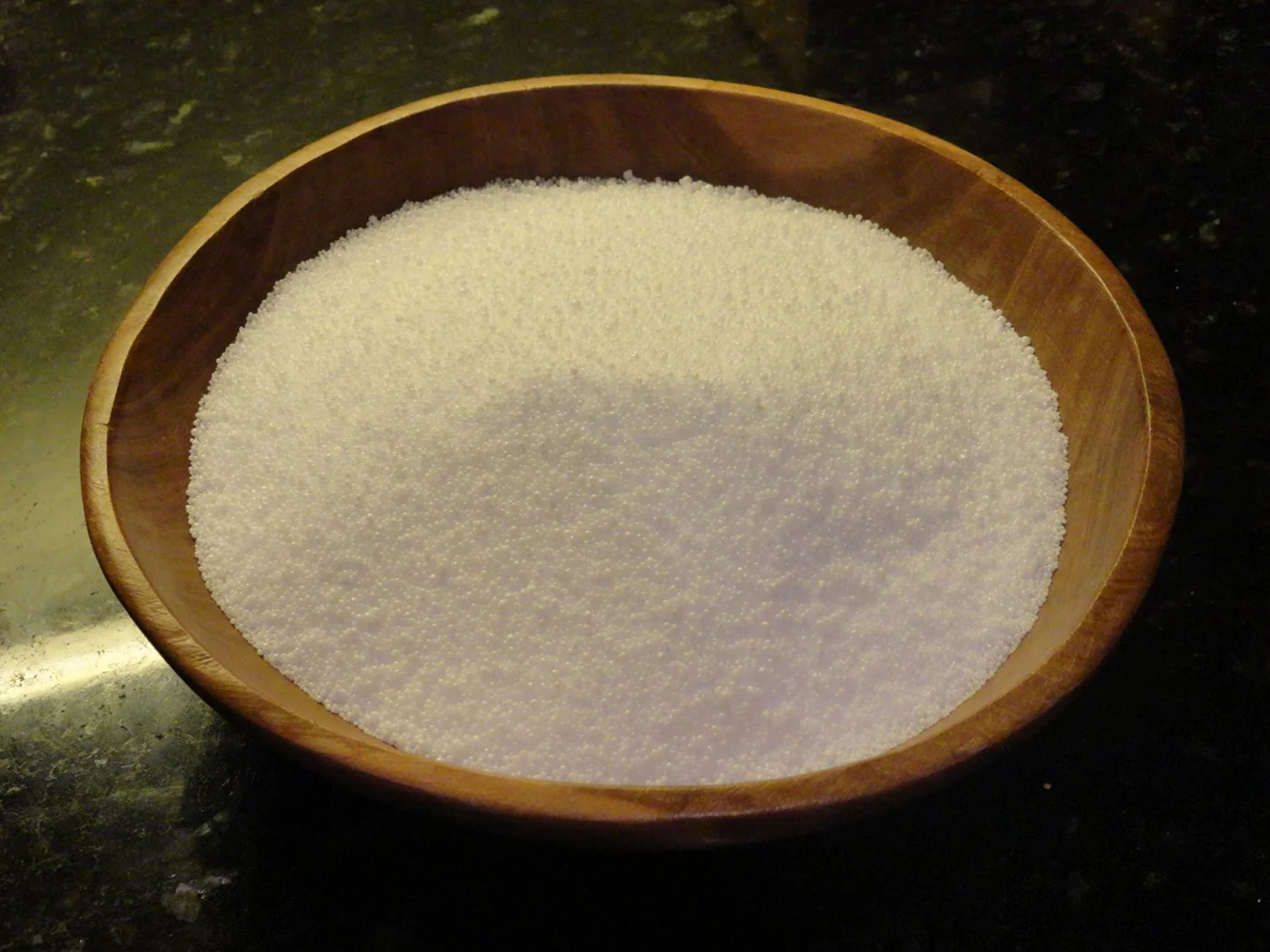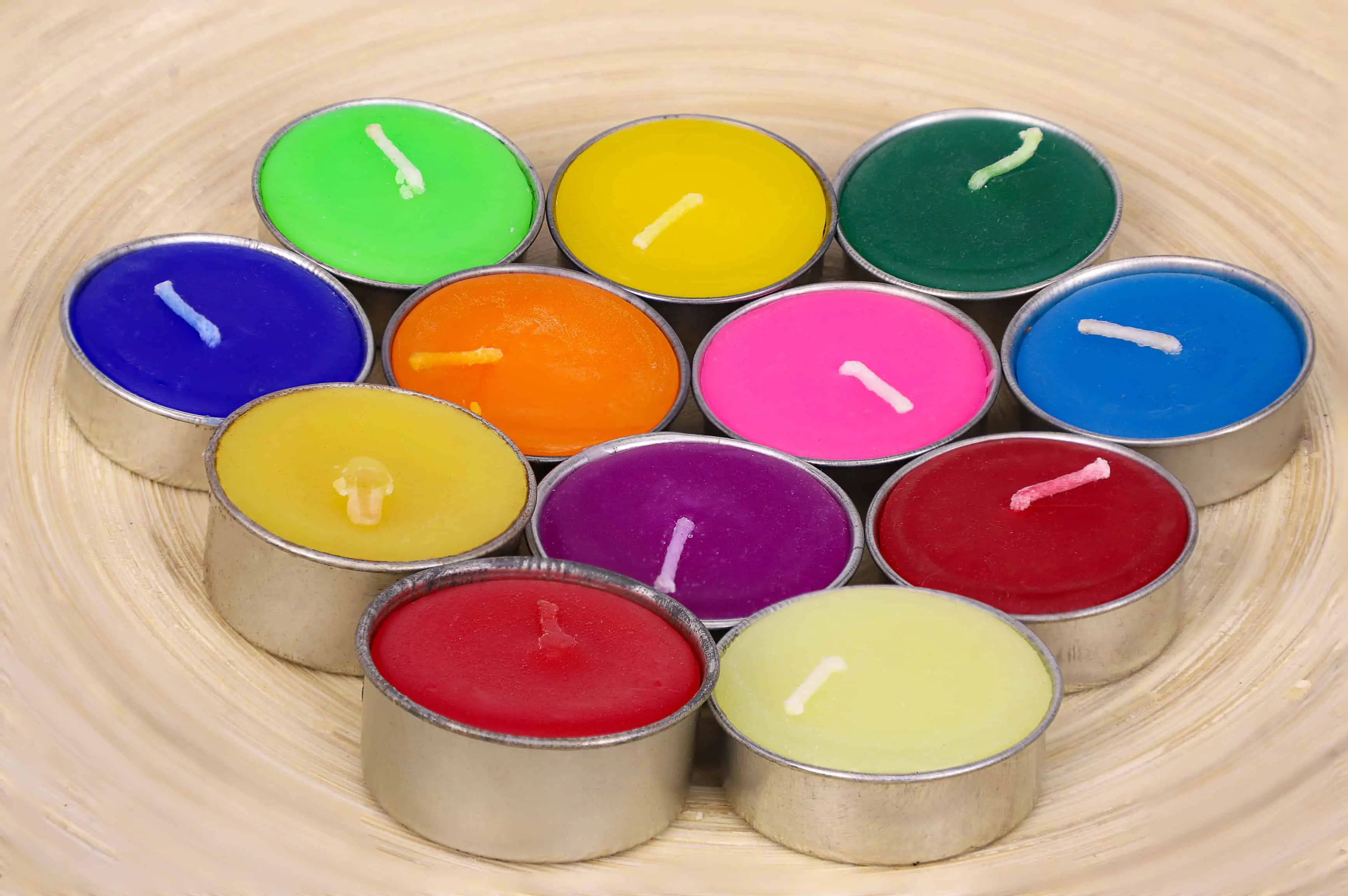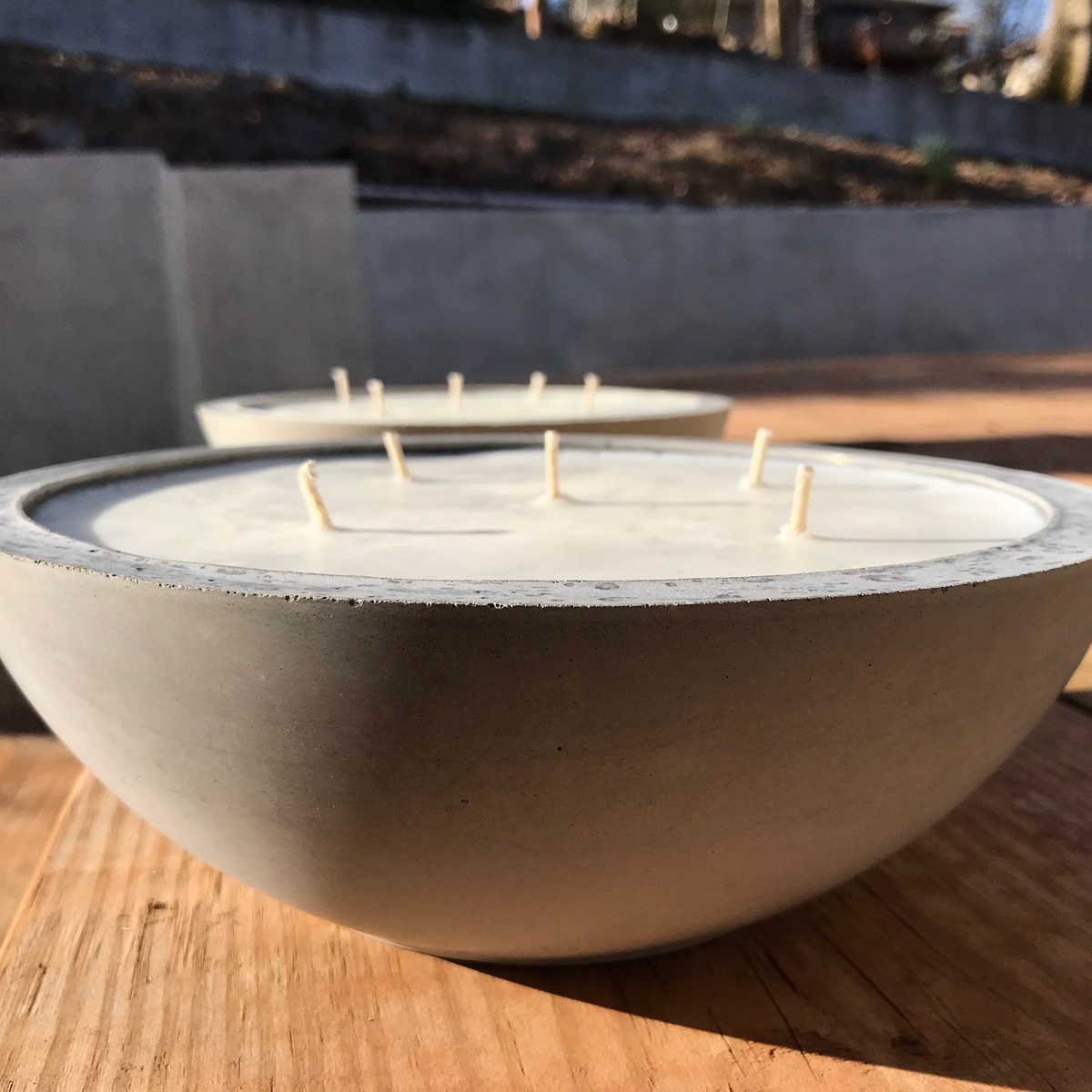

Articles
What Is The Best Wick To Use For Soy Candles
Modified: December 7, 2023
Looking for the best wick to use for soy candles? Check out our informative articles for expert tips and recommendations on choosing the perfect wick.
(Many of the links in this article redirect to a specific reviewed product. Your purchase of these products through affiliate links helps to generate commission for Storables.com, at no extra cost. Learn more)
Introduction
Soy candles have gained immense popularity in recent years, thanks to their natural ingredients and clean-burning properties. When it comes to crafting the perfect soy candle, every element plays a crucial role, including the choice of wick. The wick is responsible for providing an even burn and ensuring the candle’s longevity, making it an essential component to consider.
Choosing the right wick for your soy candle can be a daunting task, considering the wide variety available in the market. Different wicks can result in varying burn rates, flame sizes, and overall performance. In this article, we will explore the different types of wicks and provide insights into the best options for soy candles.
Before delving into the specifics of each wick, let’s discuss the key factors to consider when choosing a wick for your soy candles:
- Container size: The size of your candle container plays a role in choosing the appropriate wick. A small container may require a thinner wick, while a larger container may need a thicker wick to ensure an even burn.
- Fragrance load: If you plan to add fragrance to your soy candle, you need to consider a wick with a higher heat output to properly disperse the scent.
- Desired burn time: Depending on whether you want a shorter or longer burn time, you may need to select a wick that suits your desired duration.
- Candle type: Different types of soy candles, such as pillar candles or container candles, require different wicks to achieve optimal performance.
Now that we have a good understanding of the factors to consider, let’s dive into exploring the different types of wicks suitable for soy candles:
Key Takeaways:
- Choose the right wick for your soy candles by considering factors like container size, fragrance load, burn time, and personal preference. Experiment with cotton, wooden, paper, and hemp wicks to find the perfect match for your unique candle-making needs.
- Embrace the versatility of cotton wicks, the aesthetic appeal of wooden wicks, the cost-effectiveness of paper wicks, and the eco-friendly nature of hemp wicks to create captivating soy candles with optimal burn performance and delightful scents.
Read more: How To Use Wood Wick Candles
Factors to Consider when Choosing a Wick for Soy Candles
When selecting a wick for your soy candles, there are several important factors to take into account. These factors will help ensure that your candle burns safely and efficiently while providing the desired aesthetic and performance. Let’s explore these factors in detail:
- Container size: The size of your candle container will influence the type and size of wick you need. A larger container will require a thicker wick to ensure proper heat distribution and prevent tunneling. Conversely, a smaller container will require a thinner wick to prevent an excessively large flame.
- Fragrance load: If you plan to add fragrance to your soy candles, it’s essential to consider the wick’s ability to handle the added heat. Fragrances can affect the burning characteristics of the candle, so choosing a wick with a higher heat output can help ensure proper scent throw and avoid issues such as poor burning or excessive smoking.
- Burn time: The desired burn time of your candle will also impact the choice of wick. If you want a longer burn time, a thicker wick will provide a slower and steadier burn. On the other hand, a thinner wick will result in a shorter burn time.
- Candle type: Different types of soy candles, such as container candles or pillar candles, have unique requirements when it comes to wicks. Container candles typically require self-trimming wicks that can properly burn within the confines of the container, while pillar candles may need more robust wicks to support their larger size and stabilize the flame.
- Personal preference: Lastly, it’s crucial to consider personal preference when choosing a wick. Some individuals prefer a larger, more robust flame, while others prefer a smaller, more controlled flame. Experimenting with different wicks can help you find the perfect balance between aesthetics and performance.
By carefully considering these factors, you can select the ideal wick for your soy candles, ensuring a safe, consistent, and enjoyable burn. Now, let’s delve into specific types of wicks commonly used in soy candle making.
Cotton Wicks
Cotton wicks are one of the most popular choices for soy candles due to their affordability, versatility, and excellent burn performance. They are made from 100% cotton fibers, which provide a clean and consistent flame.
When using cotton wicks, it’s important to consider the diameter and thickness that best suits your candle’s container size and desired burn time. Thicker cotton wicks are suitable for larger containers, as they can provide a more even burn and prevent tunneling. Conversely, thinner cotton wicks are ideal for smaller containers, preventing an excessively large flame and an uneven burn.
Cotton wicks have a natural tendency to curl while burning, which helps reduce carbon buildup and ensures a self-trimming effect. This makes them low-maintenance and user-friendly for candle enthusiasts. Additionally, cotton wicks provide a steady flame and excellent scent throw, making them suitable for candles with high fragrance loads.
One advantage of cotton wicks is their compatibility with various candle types, including container candles, pillars, and votives. They can withstand the heat generated by the soy wax and deliver a clean and consistent burn throughout the candle’s lifespan.
It’s worth noting that cotton wicks do come in different forms, such as square-braided or flat-braided. Square-braided wicks tend to provide a more controlled burn, whereas flat-braided wicks offer a larger flame and a faster burn rate. Understanding the characteristics of each type will help you select the perfect cotton wick for your specific candle-making needs.
If you’re looking for a reliable and cost-effective wick for your soy candles, cotton wicks are a fantastic option. Their versatility, ease of use, and consistent burn performance make them a favorite among candle makers. However, depending on your specific requirements and preferences, other types of wicks may also be worth exploring. Let’s dive into another popular option: wooden wicks.
Wooden Wicks
Wooden wicks have gained significant popularity in recent years for their unique aesthetic appeal and crackling sound reminiscent of a cozy fireplace. These wicks are made from natural wood, typically sourced from sustainable forests.
When it comes to burning characteristics, wooden wicks provide a distinct experience compared to traditional cotton wicks. They create a wider flame, resulting in faster fragrance release and a visually appealing burn. The crackling sound produced by wooden wicks adds an extra sensory element, enhancing the overall ambiance of the candle.
Wooden wicks are highly versatile and can be used in various soy candle types. They work well in container candles and are also suitable for larger candles, such as pillars and even decorative centerpieces. However, it’s crucial to choose the right size and thickness of the wooden wick to ensure optimal burning performance.
One advantage of wooden wicks is their ability to self-trim as they burn. As the wood chars, it forms a slight “mushroom” shape at the top, reducing the need for trimming between burns. This characteristic makes wooden wicks relatively low maintenance for candle enthusiasts.
When using wooden wicks, it’s important to note that they require specific care and considerations during the candle-making process. It’s recommended to use a wick holder or clip to keep the wick centered and straight during pouring and setting. This ensures an even burn and prevents the flame from overly flickering or emitting excess soot.
Wooden wicks can provide a unique and captivating experience for soy candle enthusiasts who appreciate the rustic charm they bring. Their visual appeal, crackling sound, and ability to add a touch of nature make them a popular choice for those looking to create a distinctive atmosphere with their candles.
Now that we’ve explored cotton wicks for their affordability and versatility, and wooden wicks for their aesthetic appeal, let’s move on to another option: paper wicks.
When making soy candles, it’s best to use cotton wicks that are specifically designed for soy wax. These wicks are usually labeled as “low-smoke” or “clean-burning” and will provide the best performance for your soy candles.
Paper Wicks
Paper wicks are an alternative option that offers unique benefits for soy candle makers. These wicks are typically made from braided or twisted paper fibers, providing a clean and consistent flame.
One advantage of using paper wicks is their affordability. They are often more cost-effective compared to other types of wicks, making them a budget-friendly option for candle makers.
Paper wicks are known for their slow burn rate, resulting in longer burn times for your soy candles. This can be advantageous if you want your candles to last for extended periods or if you’re creating larger container or pillar candles that require a slower burn rate.
Unlike cotton wicks, paper wicks tend to have a smaller flame size. This can be advantageous for people who prefer a more controlled and subdued flame in their candles. However, it’s important to note that the smaller flame size may impact the scent throw of your candles, as the heat output might be reduced.
When using paper wicks, it’s crucial to consider the thickness and size that best suits your candle container and desired burn time. Thicker paper wicks may be suitable for larger containers, while thinner ones are ideal for smaller containers or when you want a slower burn rate.
It’s important to mention that while paper wicks can be a cost-effective and efficient option, they may not be as readily available as cotton wicks or wooden wicks. It might be necessary to source them from specialty suppliers or online retailers.
If you’re looking to create soy candles with a longer burn time and a subtle flame, paper wicks are worth considering. Their affordability and slow burn rate make them an attractive option for candle makers who prioritize cost-efficiency and extended burn times.
Now that we’ve explored cotton wicks, wooden wicks, and paper wicks, let’s move on to another type of wick commonly used in soy candle making: hemp wicks.
Read more: Why Are Soy Candles Better
Hemp Wicks
Hemp wicks have gained popularity in recent years as an eco-friendly alternative to traditional cotton wicks. These wicks are made from natural hemp fibers, which are renowned for their sustainability and durability.
One of the key advantages of using hemp wicks is their slow and consistent burn rate. They provide a steady flame that helps ensure an even and controlled burn throughout the candle’s lifespan.
Hemp wicks also have excellent heat resistance, making them suitable for soy candles with higher fragrance loads. They can effectively handle the additional heat generated by the fragrance oils, resulting in proper scent throw and enhanced aromatic experience.
Furthermore, hemp wicks are known for producing minimal soot and carbon buildup. This contributes to a cleaner burning experience, reducing the need for frequent wick trimming and maintenance.
Similar to cotton wicks, hemp wicks are available in different thicknesses to accommodate various container sizes and burn times. Thicker hemp wicks are recommended for larger containers, while thinner ones work well for smaller containers or when a slower burn rate is desired.
It’s important to note that the availability of hemp wicks may vary depending on your location and supplier options. However, their eco-friendly nature and sustainable sourcing make them an attractive choice for environmentally conscious candle makers.
Hemp wicks can add a unique touch to your soy candles, combining sustainability with a consistent burn. Their ability to handle higher fragrance loads and produce minimal soot make them a popular choice among candle enthusiasts who prioritize sustainability and performance.
Now that we’ve explored cotton wicks, wooden wicks, paper wicks, and hemp wicks, let’s summarize the key points and conclude our discussion.
Conclusion
Choosing the right wick for your soy candles is essential to ensure optimal performance and a satisfying burning experience. Each type of wick – cotton, wooden, paper, and hemp – offers its unique benefits and characteristics. By considering factors such as container size, fragrance load, burn time, candle type, and personal preference, you can make an informed decision regarding the ideal wick for your specific candle-making needs.
Cotton wicks are a popular choice due to their affordability, versatility, and clean burn. They are suitable for various candle types and offer a consistent flame and excellent scent throw.
Wooden wicks provide a distinctive aesthetic appeal with their crackling sound and wide flame. They are well-suited for creating a cozy ambiance and work well in container candles and larger pillars.
Paper wicks offer a cost-effective option with a slow burn rate, making them perfect for extended burn times. They can be suitable for those who prefer a smaller, controlled flame in their candles.
Hemp wicks are an eco-friendly choice that combines durability with a slow and consistent burn. They handle higher fragrance loads well and produce minimal soot.
While each type of wick has its advantages, it’s essential to experiment and find the wick that best suits your unique candle-making requirements. Remember to consider factors such as container size, burn time, fragrance load, and personal preference to achieve the desired burn and scent performance.
Now that you’re equipped with a deeper understanding of the different types of wicks, you’re ready to create beautiful soy candles that provide a delightful and long-lasting sensory experience for yourself and others to enjoy.
Frequently Asked Questions about What Is The Best Wick To Use For Soy Candles
Was this page helpful?
At Storables.com, we guarantee accurate and reliable information. Our content, validated by Expert Board Contributors, is crafted following stringent Editorial Policies. We're committed to providing you with well-researched, expert-backed insights for all your informational needs.















0 thoughts on “What Is The Best Wick To Use For Soy Candles”